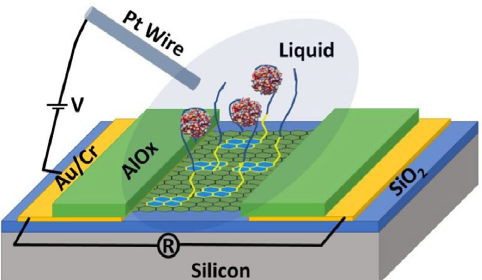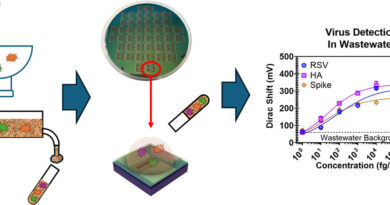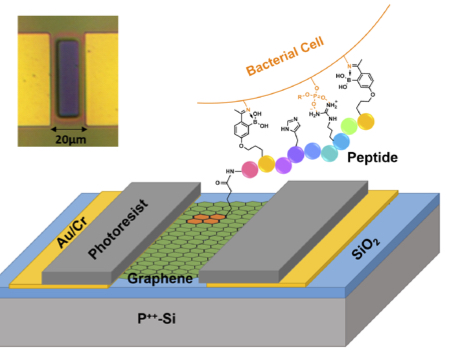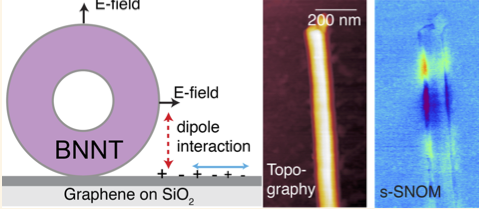Detection of a multi-disease biomarker in saliva with graphene
Human carbonic anhydrase 1 (CA1) has been suggested as a biomarker for the identification of several diseases including cancers, pancreatitis, diabetes, and Sjogren’s syndrome. However, the lack of a rapid, cheap, accurate, and easy-to-use quantification technique has prevented widespread utilization of CA1 for practical clinical applications. To this end, we present a label-free electronic biosensor for the detection of CA1 utilizing highly sensitive graphene field-effect transistors (G-FETs) as a transducer and specific RNA aptamers as a probe. The binding of CA1 with aptamers resulted in a positive shift in Dirac voltage VD of the G-FETs, the magnitude of which depended on target concentration. These aptameric G-FET biosensors showed the binding affinity (KD) of ~2.3 ng/ml (70 pM), which is four orders lower than that reported using a gel shift assay. This lower value of KD enabled us to achieve a detection range (10 pg/ml –100 ng/ml) which is well in line with the clinically relevant range. These highly sensitive devices allowed us to further prove their clinical relevance by successfully detecting the presence of CA1 in human saliva samples. Utilization of this label-free biosensor could facilitate the early-stage identification of various diseases associated with changes in the concentration of CAs.field effect transistors




